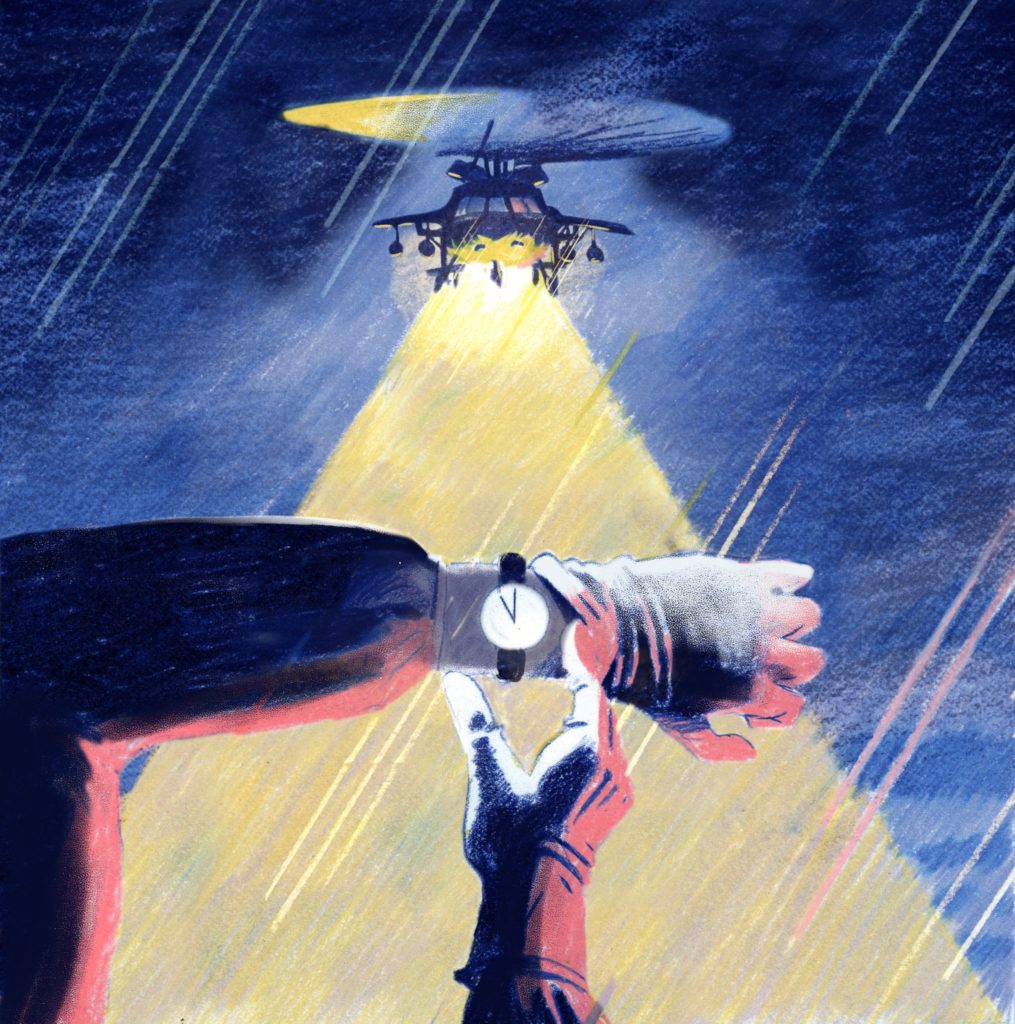One of my aviation friends discussed with me the incredible advances in night vision technology in recent years. Only a few days later, we visited the LifeFlight program at UMass and were treated to an amazing demo of the helicopter and a conversation with the pilots, mechanics, nurses, and paramedics that make the whole program run.
The pilot explained that, without night vision technology, they would not be able to land in adverse conditions, pointing out that they don’t have runway approach lights in the fields and roads that they land on to bring patients in.
I imagined one of my own flights. The setting sun peeking behind the wispy clouds; the turn onto final as the approach lights flit towards the runway; slowly gliding down towards the ground; winding down with friends after a fun evening flight.
Then I pictured the harrowing image of rain beating down while the rhythmic thump of helicopter blades overshadow the blaring siren of an ambulance; three paramedics stand soaking wet protecting the stretcher from the downdraft as the patient is loaded in. (See the Prologue of Jurassic Park, the book) The stark contrast between the two images reminded me of the stakes.

The same scene unfolds half an hour later at the entrance of the hospital:
My office overlooked the street in front of the hospital. After half an hour, I looked down to see the surface of coffee in my mug rippling like in the scene in “Jurassic Park” where the approaching T. rex’s footsteps are detected in puddles of water. Within seconds, there were rhythmic pulsations all around, then a strong thump-thump-thump-thump as the air beat against my window. Outside in the midst of the downpour, trash cans tumbled down the street and pickup trucks were forced down on their shocks. I gazed up to see an Army Blackhawk helicopter, giant in comparison to our standard medical helicopters, hovering steadily over the children’s hospital helipad, rain and fog swirling in all directions. Every part of the office thumped, the heartbeat in my own chest now overpowered.
[. . .]
The operating room team was ready for the girl, the sterile instruments laid out on the back tables, blue drapes applied after a quick clipping of her hair and lightning-fast wash of her head with sterilizing prep solution. Knife. Retractor. Drill. Scissors to open the dura, the thin leathery covering of the brain, bulging and tight from the underlying blood. Once the brain is exposed it does the work for us, extruding most of the coagulated clot in a matter of seconds. We clean out what is left at the edges and I see the offending vein, torn away from the brain during the accident. We coagulate it and begin to make our way out, step by step, gently repairing all that we had to take apart to get there.
[. . .]
A decade and a half after her injury I received one such letter. No longer the hand-drawn cards of childhood or newspaper clippings from her proud parents, this was a handwritten note on elegant stationery inviting me to her wedding. Her wedding. I could still see her in the bed of the pediatric I.C.U. after surgery, a 9-year-old child with abrasions on the side of her face from the accident and a clean white head wrap around her head. The nurses methodically connecting her to the monitors, line by line, tube by tube. Me urging her to squeeze my hand, for a sign, any sign, that she was better. Now, years later, I was reading how thankful she was to have been given this chance. Grateful for those soldiers in that helicopter, the two hospital teams, and for me. She promised to always have us in mind as she began her new married life and hopefully one day raise her own family.
As I read the letter sitting in a different office in a different city, thinking back over those events, I found myself realizing how deeply grateful I was to her, for her evolving story over the years — all the cards, each barrier broken, every milestone — and for what that experience taught me. So many other critically ill children in the subsequent years benefited from this early experience, when I was learning how hard to push, where to draw the line and how much to expect of others.
My father’s lessons in the air, that industrious emergency room doctor, those brave soldiers soaked to the bone standing there as we rolled away — so many people and events came together for this one child to grow into her life, to find happiness, to find love. All of us need a living, breathing reminder to just keep pushing on. There may be a life there to be beautifully and fully lived, a person who just needs someone, anyone, to work the problem, to make the hard call, and to fly in a storm.
Jay Wellons
From this, I am reminded of the incredible cooperation that we are lucky to have here.
Dossier
“From Blackhawk to Brain Surgery to Bride,” by Jay Wellons, February 29, 2020. https://www.nytimes.com/2020/02/29/opinion/sunday/doctors-medicine-military-emergency.html

Nasima
Very interesting and mind blowing technology.
Sahil
Thanks! It is certainly quite cool and I hope that I will have the chance to try it out someday. I’ve seen a few videos of the full color ones, but sadly those are all camera based (i.e. you have to look at a screen) and not optically based (i.e. the image is transmitted to you eyes directly).
ZN
Very interesting comparison Sahil.
Sahil
Thanks! I highly recommend reading the prologue to Jurassic Park; it really sets the scene super well!